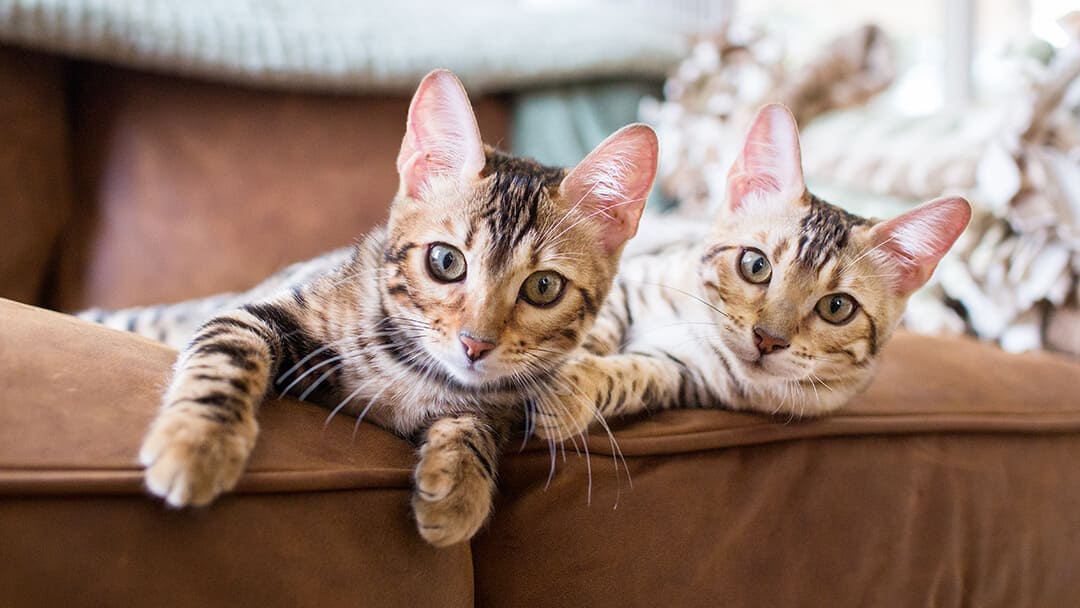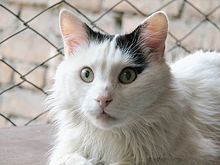In the realm of felines, the Van Cat stands out as a captivating and enigmatic breed with a rich history and alluring charm. Originating from the picturesque shores of Lake Van in Eastern Turkey, these magnificent cats have captured the hearts of cat enthusiasts worldwide with their striking appearance, unique characteristics, and endearing personality traits. Embark on a journey into the captivating world of the Van Cat as we delve into their captivating history, delve into their remarkable traits, and uncover the secrets of caring for these extraordinary creatures.
Origin of Van Cat

The Van Cat is believed to possess a lineage stretching back thousands of years, with roots traced to the ancient kingdom of Urartu in Eastern Turkey. They were highly revered by the Van people, who held a deep admiration for these cats' remarkable hunting abilities and innate intelligence. Throughout history, the Van Cat has remained a beloved companion, cherished for its beauty, grace, and unwavering loyalty.
Turkish Cat Breed

The Van Cat is often referred to as the "Turkish Cat," as it is believed to have originated from the region of Türkiye. However, it is important to note that the Van Cat is not the only breed native to this area. Other Turkish breeds include the Ankara Cat, the Turkish Angora, and the Turkish Van. Each of these breeds has its own unique characteristics and history, but the Van Cat remains one of the most popular and well-known.
Characteristics of Van Cat

The Van Cat possesses an array of extraordinary qualities that set it apart from its feline counterparts. Among its most notable traits is its exceptional swimming prowess. Unlike most cats, Van Cats exhibit an affinity for water, delighting in playful dips in lakes, rivers, and even the ocean. Their thick, water-resistant coat allows them to navigate aquatic environments with ease, enabling them to pursue water-bound prey with remarkable agility.
Appearance of Van Cat

The Van Cat is a medium-sized breed, with males typically weighing between 10-20 pounds and females between 7-12 pounds. They have a muscular build and a long, elegant body. One of the most striking features of the Van Cat is its unique coat pattern, known as "van markings." This pattern consists of a white body with colored markings on the head and tail. The most common colors for these markings are red, cream, and black, but other colors such as blue and tortoiseshell can also occur.
In addition to their distinctive coat pattern, Van Cats also have strikingly beautiful eyes. Their eye color can range from amber to green, with some cats even having one of each color. This adds to their already captivating appearance and makes them stand out among other breeds.
Behavior of Van Cat

Van Cats are known for their intelligence, playfulness, and affectionate nature. They are highly social creatures and thrive in households where they receive plenty of attention and interaction. They are also known for their vocalizations, often communicating with their owners through a variety of meows, chirps, and purrs.
One of the most fascinating behaviors of Van Cats is their love for water. As mentioned earlier, they have a natural affinity for swimming and are not afraid to take a dip whenever the opportunity presents itself. This unique trait sets them apart from other cat breeds and adds to their charm and allure.
Famous Turkish Cats

Throughout history, many famous cats have hailed from Türkiye, including several Van Cats. One of the most well-known was a Van Cat named Tombili, who gained fame after a photo of him lounging on a sidewalk went viral. Sadly, Tombili passed away in 2016, but his memory lives on through a statue erected in his honor in Istanbul.
Another famous Van Cat is Kedi, the star of a documentary film that explores the lives of street cats in Istanbul. Kedi has captured the hearts of viewers worldwide with her independent spirit and captivating personality, showcasing the unique bond between Turkish people and their beloved feline companions.
Caring for Van Cats

Caring for a Van Cat requires some specific considerations due to their unique characteristics and needs. Here are some essential tips for providing the best care for your Van Cat:
- Grooming: Van Cats have a thick, water-resistant coat that requires regular grooming to prevent matting and tangles. Weekly brushing is recommended, and during shedding season, daily brushing may be necessary.
- Exercise: As active and playful cats, Van Cats require plenty of opportunities for exercise and mental stimulation. Interactive toys, climbing structures, and playtime with their owners are all great ways to keep them entertained and healthy.
- Diet: A high-quality, balanced diet is crucial for maintaining the health and well-being of Van Cats. Consult with your veterinarian for recommendations on the best food for your cat's specific needs.
- Water: As mentioned earlier, Van Cats have a love for water, so it's essential to provide them with fresh, clean water at all times. Some Van Cats may even enjoy drinking from a running faucet or a pet fountain.
- Veterinary Care: Regular check-ups with a veterinarian are essential for keeping your Van Cat healthy and detecting any potential health issues early on. It's also important to stay up-to-date on vaccinations and preventative care, such as flea and tick treatments.
Conclusion

In conclusion, the Van Cat is a truly remarkable breed with a rich history and unique traits that make them stand out among other felines. From their origins in Türkiye to their exceptional swimming abilities, these cats continue to captivate and charm people all over the world. If you're considering adding a Van Cat to your family, be prepared for a loyal, intelligent, and affectionate companion who will bring joy and love into your life. With proper care and attention, a Van Cat can make a wonderful addition to any household.
Nhận xét
Đăng nhận xét